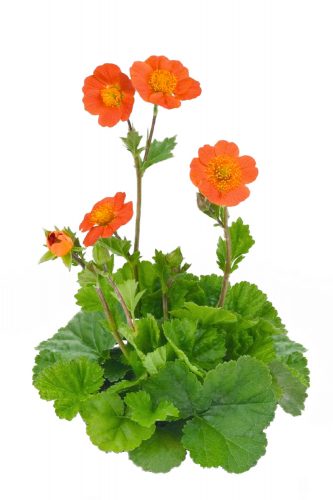
When it comes to plant buying, I tend to be resistant to new introductions.
I generally stick with varieties that have a track record in cultivation and, preferably, that I’ve actually seen growing in a garden. It’s also quite often the case that newer varieties of a familiar plant have shed some essential character I appreciate in the older version, or gained some quality I dislike. That includes plants that have so many flowers you can’t see the foliage, or flowers that look unnaturally large.
It also includes excessively dwarfed, dumpy plants that have zero structural interest. All these are traits that modern plant breeders often seem to be looking for, sometimes at the expense of valuable qualities such as fragrance, natural elegance or the will to grow.
That’s why you’ll rarely see a column of mine about brand new introductions. Until I’ve had a chance to grow a new variety or have at least seen it in other people’s gardens I am not interested in writing about it.
There are exceptions, of course. There will always be a few exceptional new varieties that rise to the top of the heap in a year or two. For me, that includes some newer geums.
I can imagine a few readers thinking “What the heck are geums?” Their common name, avens, is scarcely more familiar. Geums have traditionally been a minor presence in gardens, but they have several good qualities that are retained or enhanced in some relatively recent introductions.
In late spring and early summer, geums stand out for blooming in vibrant colors in the hot part of the spectrum, namely red, yellow and orange. Individual geum flowers are an inch or more across and frequently semi-double. They are borne on wiry, branching, upright stems above a clump or mat of fuzzy green leaves.
Geum colors contrast gorgeously with the many blues and purples of early summer, and most continue blooming for a long time — long enough for them to cavort with the likes of daylilies, kniphofias and canna lilies, their airy structure making an effective counterpoint to big, bold flowers.
Geum plants vary in height from 12 inches to a little over two feet. Their clumps and mats of basal leaves suit them for the front of the border. ‘Mango Lassi’ is a treasure for small-garden edges, tossing up peachy orange flowers on one-foot stems for a long period in late spring and intermittently thereafter. It is easily divided when its mat of leaves spread a little two widely.
Flower of pure, bright orange erupt on the 24-inch stems of ‘Totally Tangerine’ just when purple Siberian irises and salvia ‘May Night’ are blooming. ‘Totally Tangerine’ seems to be replacing a venerable orange-flowered cultivar named ‘Starker’s Magnificum,’ which (if you can find it!) seems worth growing if only for the name. Another time-tested variety still in circulation, ‘Mrs. Bradshaw’ boasts rather larger, semi-double flowers in pure tomato red on stalwart 30-inch stems. ‘Lady Stratheden’ is similar but has flowers of pure golden yellow.
Getting back to newer geum introductions, I love lower growing ‘Flames of Passion.’ Loads of peachy-red flowers rise from a compact mat of foliage. Flower stems and buds are dark reddish-purple and the subtly colored flowers nod a little, in remembrance of its parent, water avens (Geum rivale), which has drooping flowers and a love of moist soil. All garden geums need regular water for best performance and maximum bloom. They also need plenty of sun, but don’t seem to be fussy about soil type, doing well in any garden with reasonable drainage.
Western Oregon has a native geum. Large-leafed avens (Geum macrophyllum) carries small, bright-yellow flowers above robust, bright-green foliage clumps. It is very easy to grow and self-sows prolifically. Like other avens it has an efficient seed dispersal system (the hooked seeds cling to anything that comes in contact) so it is easy to get too much of it. Some native plant gardeners regard it as a bit of a thug. I can’t quite imagine being without it, though, and unwanted clumps are simple to dig out.
Speaking of natives, in a recent column about hardy geraniums I didn’t have room to mention our own, beautiful perennial Oregon geranium (Geranium oreganum). This is not a common plant and it is very much worth growing, with soft green, deeply divided leaves and showy purple-pink flower in late spring. It is found in oak woodlands and meadows west of the Cascades, and is reputedly easy to grow from seed.
Rachel Foster lives and gardens in Eugene. She can be reached at rfoster@efn.org.